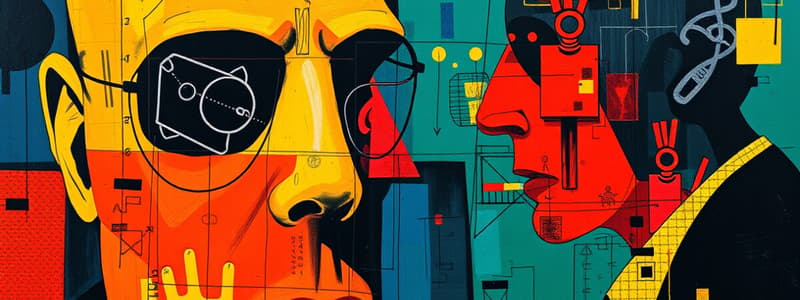Podcast
Questions and Answers
What was the primary purpose of the Bertillon system in forensic science?
What was the primary purpose of the Bertillon system in forensic science?
- To create a detailed criminal analysis report.
- To develop a measurement system for identifying individuals. (correct)
- To provide a photographic identification method.
- To standardize police reporting procedures.
Which of the following measurements was NOT a part of the Bertillon system?
Which of the following measurements was NOT a part of the Bertillon system?
- Length of the middle finger
- Height of the individual
- Radius of the forearm (correct)
- Width of the head
Why did the Bertillon system eventually fall out of favor?
Why did the Bertillon system eventually fall out of favor?
- It relied on outdated technology.
- It was easily manipulated compared to fingerprinting. (correct)
- It was too time-consuming to implement.
- It resulted in high rates of false identification.
What kind of record accompanied the measurements taken in the Bertillon system?
What kind of record accompanied the measurements taken in the Bertillon system?
Alphonse Bertillon is known as the father of which field in forensic science?
Alphonse Bertillon is known as the father of which field in forensic science?
Flashcards are hidden until you start studying
Study Notes
Alphonse Bertillon
Background
- Born on April 24, 1853, in Paris, France.
- French police official and pioneer in forensic science.
- Known as the father of criminal identification.
Anthropometry
-
Definition: A measurement system used to identify individuals based on physical dimensions.
-
Key Features:
- Developed in the late 19th century as a systematic method for identifying criminals.
- Utilized a series of body measurements, including height, head circumference, and limb lengths.
-
Bertillon System:
- Involved 11 specific measurements, including:
- Height
- Width of the head
- Length of the foot
- Length of the middle finger
- Others to create a unique profile for each individual.
- Accompanied by a detailed photographic record and a physical description of the individual (Bertillonage).
- Involved 11 specific measurements, including:
-
Process:
- Measurements taken with precise instruments.
- Each individual's data compiled into a card.
- Allowed for quick identification and comparison with existing records.
-
Impact:
- Introduced standardization in prisoner identification.
- Served as a precursor to modern fingerprinting and biometric identification systems.
-
Limitations:
- Eventually fell out of favor due to inaccuracies and the ease of manipulation compared to fingerprinting.
- By the early 20th century, fingerprinting became the preferred method for identifying individuals.
-
Legacy:
- Established the groundwork for future developments in forensic identification techniques.
- Emphasized the importance of systematic approaches in criminal investigations.
Alphonse Bertillon
- Born on April 24, 1853, in Paris, France.
- Renowned French police official and pioneer in forensic science.
- Recognized as the father of criminal identification.
Anthropometry
- Definition: A measurement system designed for individual identification through physical dimensions.
- Developed in the late 19th century to systematically identify criminals.
- Key features include a series of body measurements such as height, head circumference, and limb lengths.
Bertillon System
- Utilized 11 specific measurements to create a unique profile for each individual.
- Measurements included height, width of the head, length of the foot, and length of the middle finger.
- Accompanied by a detailed photographic record and a physical description, termed "Bertillonage."
Process
- Precise instruments were used to take measurements.
- Each individual's data was compiled into a card for easy reference.
- Enabled quick identification and comparison with existing records.
Impact
- Introduced standardization in the process of prisoner identification.
- Served as a precursor to modern fingerprinting and biometric identification systems.
Limitations
- Became less favored due to inaccuracies and susceptibility to manipulation compared to fingerprinting methods.
- By the early 20th century, fingerprinting emerged as the preferred identification method.
Legacy
- Established foundational principles for future advancements in forensic identification techniques.
- Highlighted the significance of systematic methodologies in criminal investigations.
Studying That Suits You
Use AI to generate personalized quizzes and flashcards to suit your learning preferences.




